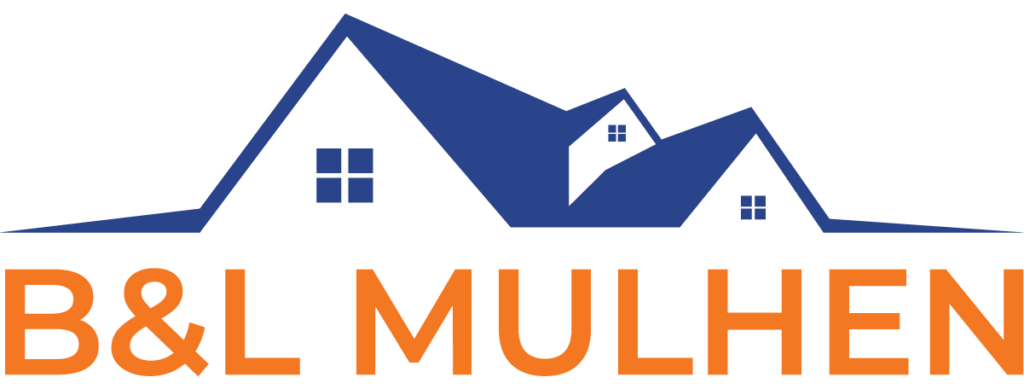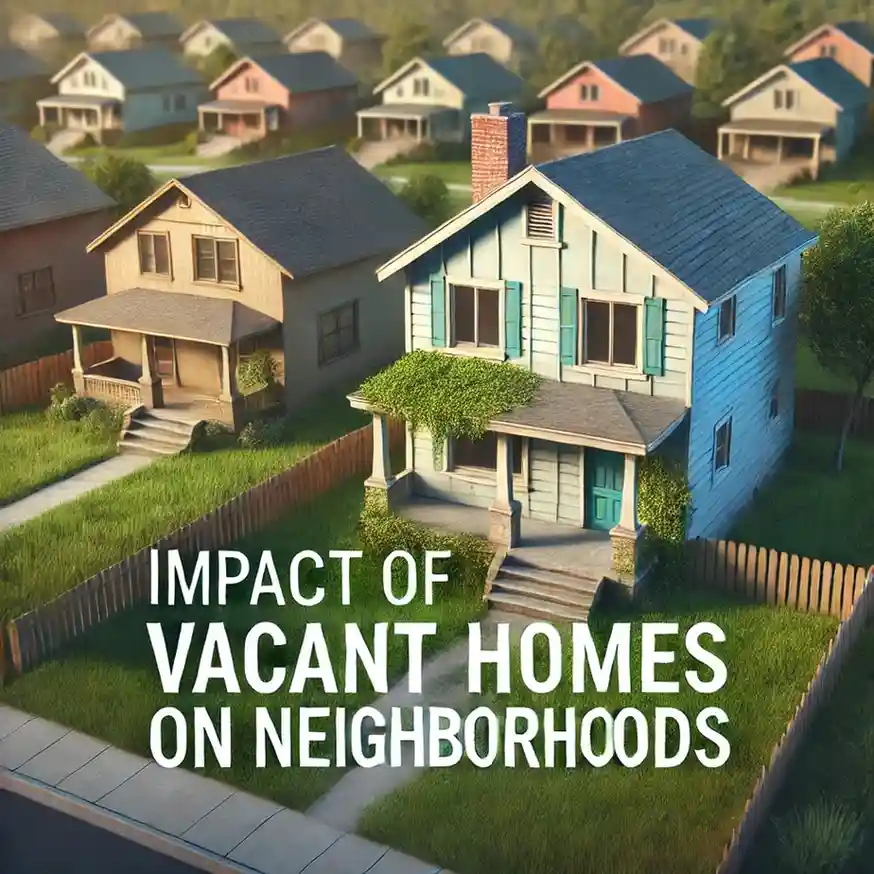Vacant homes are more than just lifeless structures—they symbolize deeper issues that can undermine the strength and identity of a neighborhood. When a property sits empty, it stops contributing to the surrounding community. Over time, this absence becomes visible in both physical and emotional ways. It can lead to a lack of neighborly connection, trigger safety concerns, and suppress the housing market.
Empty houses may result from financial hardship, inheritance issues, natural disasters, or migration trends. Regardless of the cause, these homes often remain unused for long periods, reducing the functionality of neighborhoods that rely on a healthy turnover of occupied properties. A vacant home is not just an idle asset—it becomes a silent disruptor to the balance of the area it resides in.
Neighborhood Decline and Urban Blight
When neighborhoods begin to accumulate a noticeable number of unoccupied homes, the atmosphere starts to change. Streets once filled with activity and pride become eerily quiet. With fewer residents to maintain appearances or engage with the local environment, homes can fall into disrepair. Overgrown lawns, broken windows, and neglected paintwork begin to replace the well-maintained facades that once welcomed newcomers.
This deterioration contributes to urban blight—a cycle of physical and psychological decline. Areas marked by blight often find it harder to attract new buyers or investors. The sense of abandonment lowers the quality of life for remaining residents, who may begin to feel discouraged by their surroundings. As more homes fall vacant, the process accelerates, leading to the type of decline that becomes increasingly difficult to reverse.
For neighborhoods that are struggling with high vacancy rates, taking steps to address the issue is crucial. Often, owners of vacant properties may need assistance, whether through selling the home or finding ways to secure and maintain the property. If you’re looking for guidance on how to sell vacant property, Mulhen Buys Properties offers solutions for homeowners seeking to part with vacant homes quickly and efficiently.
Crime Magnet and Public Safety Risks
Vacant homes are often left open to the elements, creating a welcoming environment for criminal activity. Without regular maintenance or oversight, these properties attract vandals, squatters, and individuals looking to engage in illegal activities. This heightened criminal presence creates an atmosphere of fear among the remaining residents. When crime rates rise, even the most loyal neighbors may begin to question their safety, leading to feelings of unease or frustration.
This concern is especially high in urban areas, where vacant properties can become hotbeds for more dangerous criminal activities, such as drug trafficking or organized crime. Additionally, the increase in criminal activity directly impacts law enforcement and emergency response teams, who must divert resources to manage the rise in incidents related to these vacant homes.
The longer homes remain unoccupied, the greater the risk to public safety. Without proper intervention, these homes continue to become more vulnerable, acting as a magnet for further neglect and criminal behavior.
Decreased Property Values
One of the most immediate and tangible effects of vacant homes is the decrease in property values. Research consistently shows that homes located near vacant properties experience a drop in market price. Buyers are often reluctant to purchase homes in neighborhoods marked by unmaintained, boarded-up houses, fearing that the problems with the area are deeper than just one or two empty homes.
This devaluation process isn’t limited to one property. The cumulative effect of vacant homes is felt across entire communities, as the ripple of declining prices spreads. Homeowners who wish to sell their properties may find themselves facing lower offers or prolonged periods without any interested buyers.
In many cases, homes near vacant properties may struggle to maintain their market worth, especially if these empty homes become targets of further decay. For individuals looking to buy or sell in neighborhoods with a high number of vacant homes, it can be a long and challenging process to regain the value lost.
Health Hazards and Environmental Concerns
Abandoned homes pose significant health and environmental risks to the community. Without regular upkeep, homes that are left vacant may harbor mold, pests, and other harmful elements. Moisture that collects inside an unoccupied home, coupled with stagnant water, can create perfect breeding grounds for mold, which is a known allergen and respiratory irritant. Insects and rodents can also make their way into these properties, further compromising the health of nearby residents.
Moreover, abandoned homes are prone to accumulating debris, which can exacerbate fire risks in the area. Dry vegetation, unattended garbage, and scattered debris are more likely to ignite during dry conditions, posing a serious hazard to nearby homes and their occupants.
Another environmental concern is the deterioration of the urban landscape. Overgrown yards, untrimmed trees, and the loss of green space can reduce biodiversity, affecting local wildlife and plant life. Vacant properties, left unchecked, can lead to a depletion of these valuable environmental resources.
Municipal Costs and Strain on Resources
Vacant homes also place a heavy burden on local governments. Municipalities are often forced to allocate resources to secure these properties, clean up trash and debris, and sometimes even board up windows or demolish them if they are too far gone. Public services such as fire, police, and sanitation departments must routinely respond to issues related to vacant homes, diverting resources away from other community needs.
This increased strain on municipal budgets can result in higher taxes for homeowners and a decreased ability to provide services in other areas of the community. In some instances, local governments may have to take ownership of severely dilapidated properties, further burdening taxpayers with the cost of demolition or remediation.
For those looking for a solution to vacant property issues, it may be worth considering selling to companies that specialize in quick, hassle-free purchases of abandoned homes. This process can relieve local governments of some of their responsibilities while providing homeowners with a chance to move forward.
Community Morale and Cohesion
The presence of vacant homes can have a significant psychological impact on the morale of a community. When residents see properties left abandoned, it can signal to them that their neighborhood is not being cared for or supported. This perception can erode community pride, causing individuals to lose interest in maintaining their own homes or engaging with their neighbors.
Over time, the emotional toll of living near vacant properties may cause residents to leave in search of more vibrant or stable areas. This demographic shift often leads to a decrease in population, which can further perpetuate the cycle of vacant homes. As fewer people remain, the social fabric of the neighborhood weakens, and it becomes even harder to reverse the decline.
As communities struggle to retain residents and keep morale high, addressing vacant properties becomes essential. Communities that are able to revitalize or repurpose these spaces are more likely to foster positive energy and engage residents in rebuilding their neighborhood’s sense of unity.
Economic Impact and Lost Potential
Vacant homes represent missed opportunities for both the local economy and the neighborhood. These properties no longer contribute to local tax revenues, which can result in diminished funding for public services and community projects. The absence of residents also means fewer customers for local businesses, which can lead to a decline in job opportunities and reduced economic activity.
When vacant homes dominate an area, it becomes harder to attract investments and develop new ventures. Potential business owners may look elsewhere for opportunities, and developers may choose not to invest in areas marked by blight. This loss of economic potential not only affects the immediate neighborhood but can have far-reaching consequences on the broader economy.
By addressing the issues surrounding vacant homes—whether through sale, redevelopment, or increased municipal intervention—communities can reclaim these lost opportunities and pave the way for a healthier, more prosperous future.





